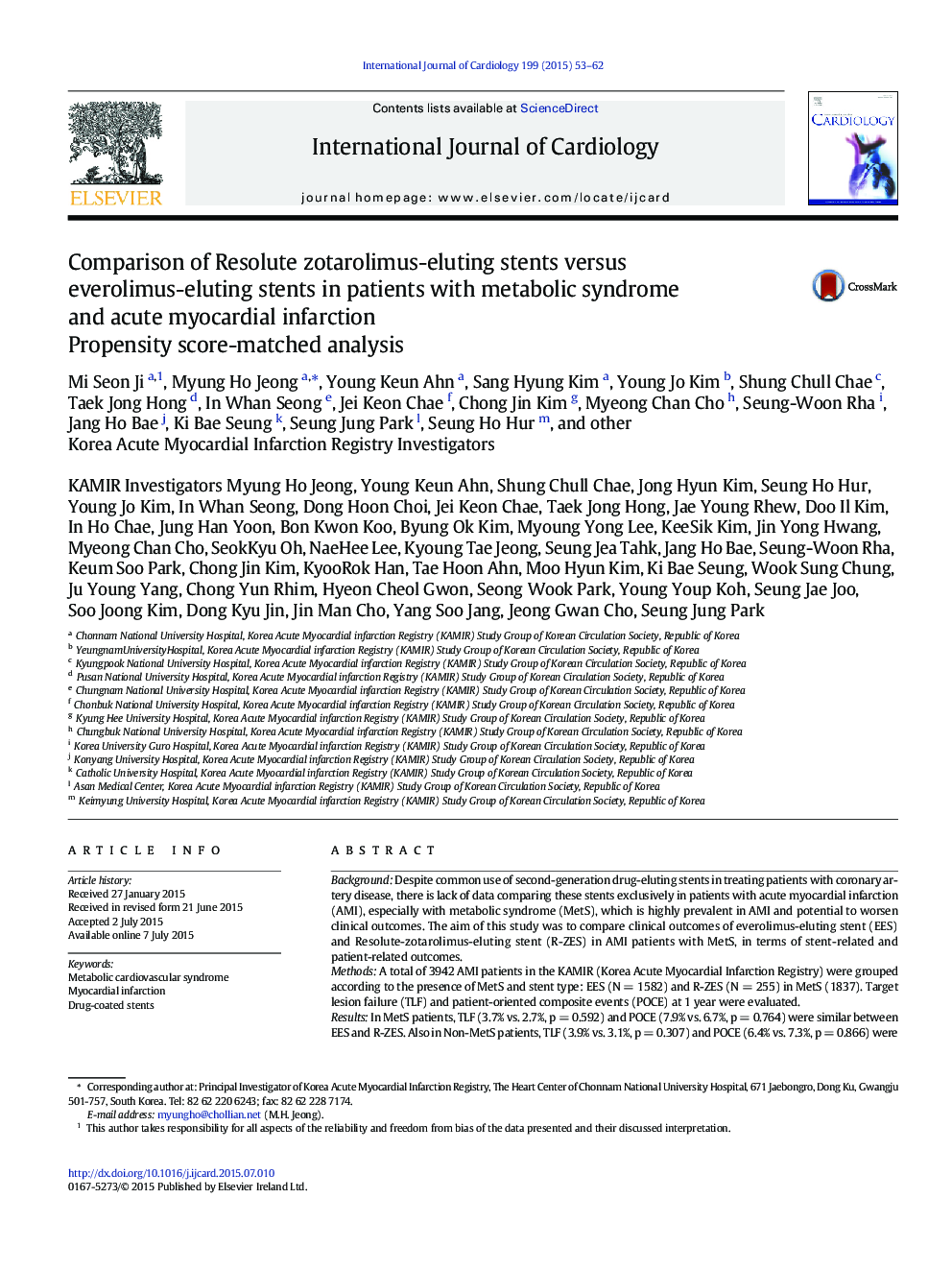| Article ID | Journal | Published Year | Pages | File Type |
|---|---|---|---|---|
| 5965833 | International Journal of Cardiology | 2015 | 10 Pages |
BackgroundDespite common use of second-generation drug-eluting stents in treating patients with coronary artery disease, there is lack of data comparing these stents exclusively in patients with acute myocardial infarction (AMI), especially with metabolic syndrome (MetS), which is highly prevalent in AMI and potential to worsen clinical outcomes. The aim of this study was to compare clinical outcomes of everolimus-eluting stent (EES) and Resolute-zotarolimus-eluting stent (R-ZES) in AMI patients with MetS, in terms of stent-related and patient-related outcomes.MethodsA total of 3942 AMI patients in the KAMIR (Korea Acute Myocardial Infarction Registry) were grouped according to the presence of MetS and stent type: EES (N = 1582) and R-ZES (N = 255) in MetS (1837). Target lesion failure (TLF) and patient-oriented composite events (POCE) at 1 year were evaluated.ResultsIn MetS patients, TLF (3.7% vs. 2.7%, p = 0.592) and POCE (7.9% vs. 6.7%, p = 0.764) were similar between EES and R-ZES. Also in Non-MetS patients, TLF (3.9% vs. 3.1%, p = 0.307) and POCE (6.4% vs. 7.3%, p = 0.866) were similar between 2 groups. TLF was similar between MetS and Non-MetS patients (3.6% vs. 3.8%), while POCEs (7.7% vs. 6.6%) were higher in MetS. Propensity-score matching analysis showed similar results between stent groups in MetS and Non-MetS. In multivariate analysis, left ventricular ejection fraction and symptom-to-door time were independent predictors of TLF and POCE in MetS patients with AMI.ConclusionsIn MetS patients with AMI, EES and R-ZES showed excellent performance and safety. However, patient-oriented composite events were relatively high, suggesting more efforts to improve them.
